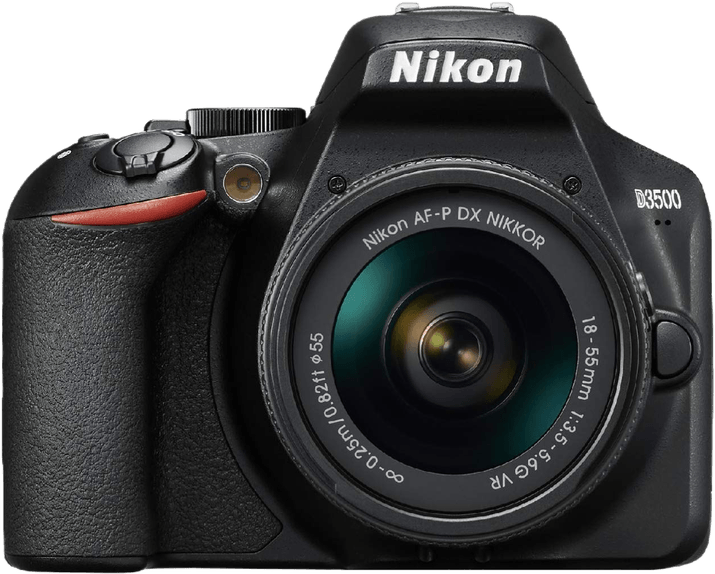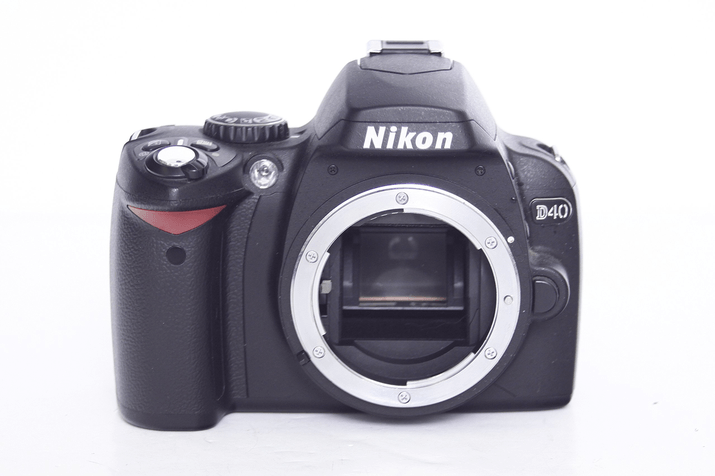Nikon D3500 vs D40X Comparison
Nikon D3500

Nikon D40X

The Nikon D3500 outperforms the Nikon D40X with a 61/100 score, compared to the D40X’s 33/100. Both cameras are DSLRs and share similar dimensions, with the D3500 measuring 124 x 97 x 70mm and the D40X at 124 x 94 x 64mm. The D3500, released in 2018, is more recent and affordable at a launch price of $499.95, while the D40X was released in 2007 with a launch price of $998.
The D3500’s higher score reflects its superior performance, offering better features and technology due to its more recent release. However, the D40X has a slight advantage in weight, being lighter at 522g compared to the D3500’s 615g.
Taking these factors into account, the Nikon D3500 is the better choice for most photographers, offering improved performance and affordability. The Nikon D40X may be suitable for those prioritizing a lighter camera, but its lower score and older technology make it less appealing in comparison.
Nikon D3500 vs D40X Overview and Optics
The Nikon D3500 outperforms the Nikon D40X in optics, scoring 65/100 compared to the D40X’s 40/100. Both cameras share some common specifications, such as their APS-C sensor size, Nikon F lens mount, and lack of image stabilization. However, the D3500 surpasses the D40X in several key areas, making it the superior choice in terms of optics.
The D3500 has a higher megapixel count at 24, compared to the D40X’s 10, allowing for more detailed and higher resolution images. Additionally, the D3500 boasts a faster shooting speed of 5 frames per second, compared to the D40X’s 3, enabling users to capture fast-moving subjects more efficiently. The D3500 also benefits from a more advanced sensor type (CMOS) and processor (Expeed 4) than the D40X, which uses a CCD sensor and the Expeed processor. This results in better image quality and improved low-light performance for the D3500, which is further evidenced by its higher DXOMARK sensor score of 87, compared to the D40X’s 63.
While the D40X may not outshine the D3500 in terms of optics, it still provides decent image quality and performance for an older model. Its Nikon F DX lens mount is compatible with a wide range of lenses, allowing users to expand their shooting capabilities.
When comparing the optics of the Nikon D3500 and Nikon D40X, the D3500 emerges as the clear winner, offering superior image quality, resolution, and performance. However, the D40X remains a viable option for those seeking an affordable, entry-level DSLR with a range of compatible lenses.
Nikon D3500 vs D40X Video Performance
When comparing the video capabilities of the Nikon D3500 and the Nikon D40X, it is important to note that the Nikon D40X does not have any video functionality. This means that if video recording is a priority for you, the Nikon D3500 is the only option between these two cameras.
The Nikon D3500 has a video score of 56 out of 100. The camera can record Full HD videos with a maximum resolution of 1920×1080 pixels. The highest video frame rate it can achieve is 60 frames per second, allowing for smooth and detailed footage. However, the D3500 does not have built-in time-lapse functionality.
When considering these two cameras, the Nikon D3500 is the clear choice for those interested in video capabilities. The Nikon D40X, lacking video functionality, is not suitable for videographers. The D3500 offers Full HD video recording, ensuring that users can capture high-quality footage for their projects.
Nikon D3500 vs D40X Features and Benefits
The Nikon D3500 outperforms the Nikon D40X in features, with a score of 54/100 compared to the D40X’s 17/100. Both cameras share some specifications, including the absence of a touchscreen, flip screen, GPS, and WiFi. However, the D3500 surpasses the D40X in several aspects, making it the clear winner in this comparison.
The D3500 has a larger screen size of 3 inches, compared to the D40X’s 2.5 inches. Additionally, the D3500’s screen resolution is significantly higher at 921,600 dots, while the D40X has a mere 230,000 dots. This difference allows the D3500 to provide clearer and more detailed image previews and better menu navigation.
Another advantage of the D3500 is its Bluetooth connectivity, which the D40X lacks. The presence of Bluetooth allows users to easily transfer images to compatible devices and remotely control the camera with a smartphone.
The D40X, on the other hand, does not have any notable advantages over the D3500 in terms of features. Its lower score reflects its limited capabilities compared to its competitor.
Taking these factors into account, the Nikon D3500 is the superior camera in terms of features. Its larger and higher resolution screen, as well as its Bluetooth connectivity, make it a better choice for photographers seeking a more user-friendly and versatile camera. The D40X, with its lower score and fewer features, falls short in comparison and does not offer any significant advantages.
Nikon D3500 vs D40X Storage and Battery
The Nikon D3500 outperforms the Nikon D40X in storage and battery, scoring 48/100 compared to the D40X’s 27/100. Both cameras share common specifications, including a single memory card slot and compatibility with SD and SDHC memory cards. Neither camera supports USB charging.
The D3500 has a significant advantage in battery life, offering 1550 shots per charge with its EN-EL14a battery, whereas the D40X provides only 520 shots using its EN-EL9 battery. Additionally, the D3500 accepts SDXC memory cards, giving users more storage capacity options.
The D40X does not surpass the D3500 in any storage or battery aspects. The D3500 clearly offers better battery life and storage options, making it a more practical choice for photographers who require extended shooting sessions and increased memory capacity.
Nikon D3500 vs D40X – Our Verdict
Are you still undecided about which camera is right for you? Have a look at these popular comparisons that feature the Nikon D3500 or the Nikon D40X:

